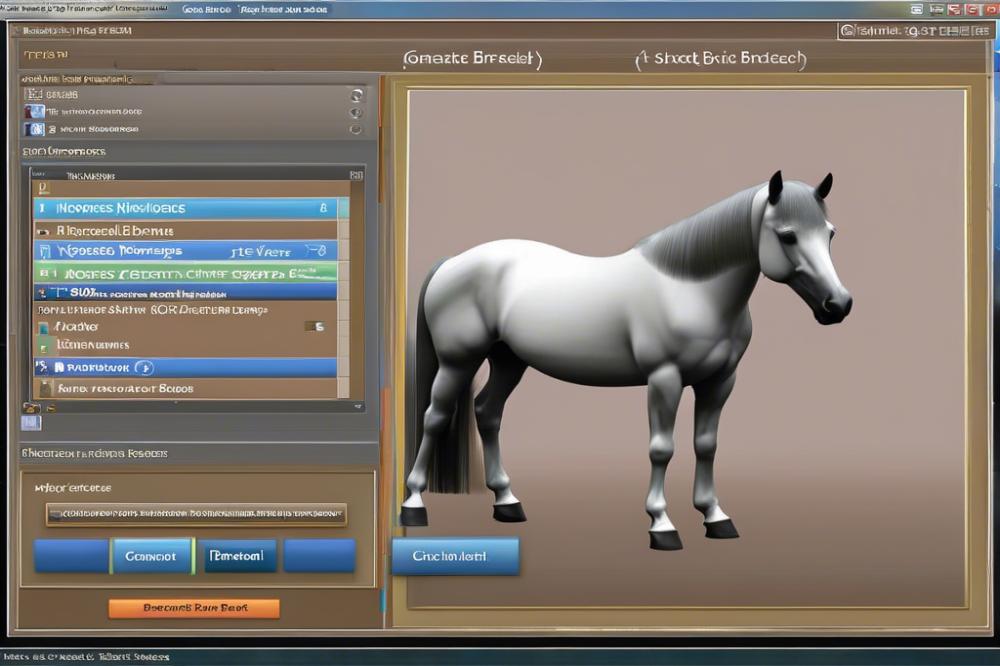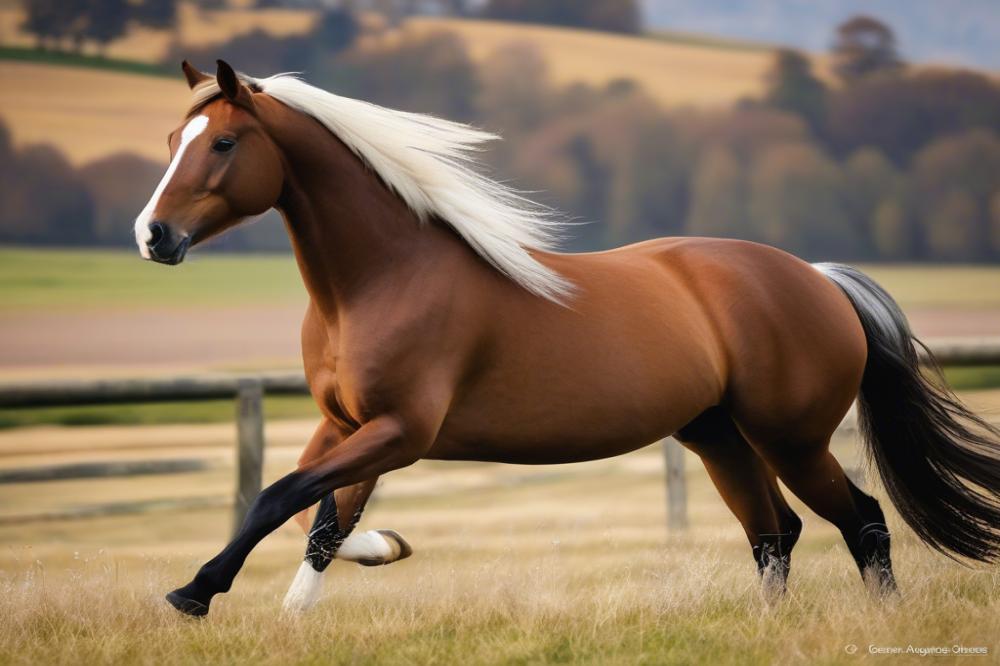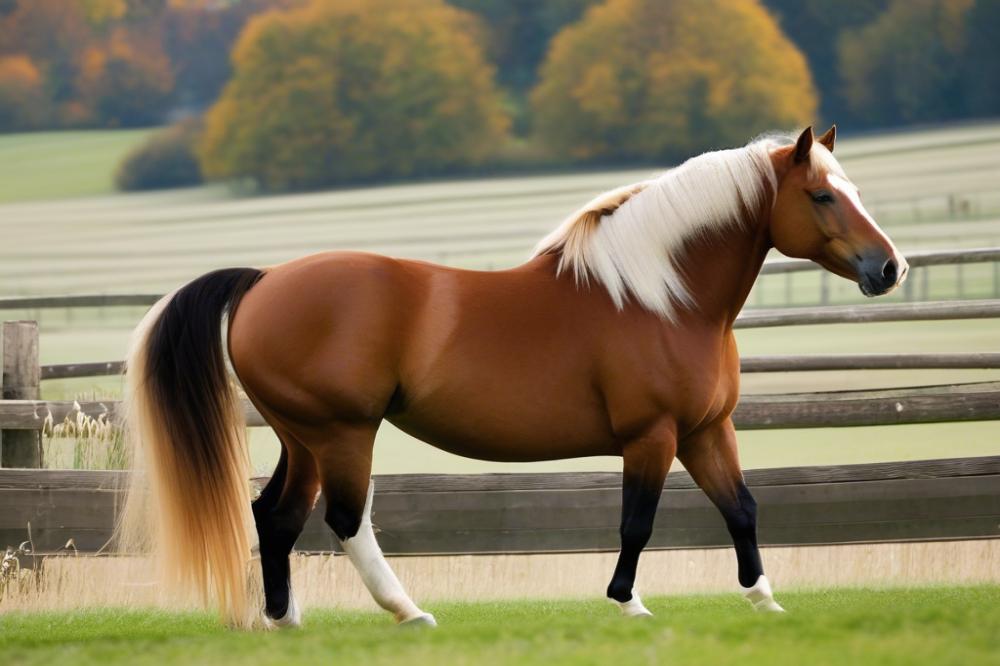Why Knowing a Horse’s Breed Matters
When you step into the world of horses, you quickly discover a vast array of horse breeds with their own distinct traits. Knowing a horse’s breed is not just a fun fact; it can influence everything from how you care for that horse to the type of training it will excel in. For instance, if you have a strong draft horse, it’s not going to handle tight turns on a racetrack quite like a sleek Thoroughbred! And trust me, nobody wants to see their gentle giant trying to squeeze into a place reserved for speed demons.
Methods for Identifying Your Equine Friend
Determining a horse’s breed can sometimes feel like trying to figure out if “are cars faster than horses?” Well, that depends on the race! Horse identification methods range from examining physical traits to diving into equine genetics. If the coat is a glossy bay and the mane is short and neat, you might be looking at an Arabian or a Quarter Horse. It’s a puzzle, and isn’t that part of the fun?
Of course, some breeds are fairly easy to spot. Take a Tennessee Walking Horse, for instance; their unique gait sets them apart from the rest of the pack. On the other hand, it might take a bit more sleuthing for mixed breeds, as they can inherit various characteristics from their lineage. Tools and resources abound for the curious and determined! With everything from blood tests to breed registries, the options are practically endless.
The Impact of Breed on Horse Characteristics
Every breed brings its own package of horse breed characteristics, influencing everything from temperament to physical abilities. Some horses are renowned for their speed, while others shine in endurance. If you’re planning to care for a high-energy Mustang, you should be prepared for a lot of exercise. Otherwise, those walls in your barn might not stay so pristine! Conversely, a mellow draft horse may revel in leisurely strolls in the pasture.
In the world of equestrian sports, knowing a horse’s breed can be the difference between winning and simply enjoying the ride. If you’re gearing up for one of the biggest horse races in the USA, your choice of breed and its characteristics can steer your success. After all, you wouldn’t ask a bulldog to chase a rabbit, now would you? A little detective work now can lead to a lifetime of harmonious horse care later!
Physical Characteristics

When it comes to equine identification, observing a horse’s physical traits gives great clues about its breed. First, look at size. Horses vary significantly in height, with some standing just a little over four feet while others soar above six feet. The height can often tell you if you’re dealing with a pony or a larger breed.
Next, consider the build. Some breeds are sleek and athletic, like Thoroughbreds, while others are sturdier and stockier, reminiscent of the Belgian draft horse. If you picture a barbell and a marathon runner, you’ll get the idea. The shape and muscle structure are telling signs. A hefty build might suggest strength for pulling heavy loads, whereas a leaner physique is likely built for speed.
Now, let’s chat about coat color. Did you know that horse breeds come in a variety of stunning colors? There are bay, chestnut, palomino, and dapple gray, to name a few. Each breed has its common colors, but surprises happen in every paddock too. Make sure to glance at any unusual markings like spots or stripes, as these can also be distinctive features for some horse identification methods.
After size, build, and color, delving into conformation is crucial. Conformation refers to how a horse’s body is put together. A well-structured horse often performs better and stays healthier. Look at the angles of their legs, the shape of their back, and the length of their neck. All of these factors relate to horse breed characteristics. A horse with proper conformation is more likely to excel in its specific activities, whether it’s racing or jumping.
Remember that equine genetics play a role too. Many characteristics are passed down through generations. If you know the breed, certain physical traits are likely to follow. Even similarities in temperament can appear based on breed. So, the next time you’re around a horse, take a closer look. Understanding the breed by these physical traits isn’t just fun—it’s part of good horse care.
Pedigree and Registration

Role of Breed Registries in Identifying Breeds
Have you ever noticed that some horses look similar but have different names? This is where breed registries come into play. These organizations keep detailed records of horse breeds, basically connecting dots through family trees. They help identify specific traits, history, and even performance records. If your horse is registered, its pedigree can tell you a lot about its ancestry. It can reveal just how far back its lineage goes and which horse breeds contributed to its unique characteristics.
Understanding Pedigree Documents
Pedigree documents can look intimidating at first glance, much like a complicated family tree. At the top, you will usually find the horse’s name and registration number. Below, you’ll see the names of its parents, grandparents, and sometimes even great-grandparents. Each name has a story and a breed associated with it. By flipping through this chart, you can discover valuable information about bloodlines. This is important for anyone interested in equine genetics or the unique horse breed characteristics at play. You’ll see traits passed down through generations. That can help predict how your horse may behave or perform.
How to Access and Interpret Registration Information
Finding registration information is easier than you might think. Most breed registries have websites where you can search for your horse’s details online. Just type in the horse’s name or registration number. You may need to register for an account, but it’s usually free. Once you have the information, interpreting it is next. Look for any notes on health issues, competition records, or special traits. These details can inform your horse care routines.
As you explore the registration, remember that not all horses may have documentation. Some may come from less formal backgrounds. In such cases, using horse identification methods like physical traits can provide insight. Knowing your horse’s breed can also help in understanding its needs and quirks.
All in all, a horse’s pedigree is not just a piece of paper; it’s a link to its heritage. So, whether you’re trying to guess your horse’s breed or just wanting to learn more about its bloodline, this is an important avenue to explore.
Behavior and Temperament

When it comes to equine identification, behavior and temperament can provide valuable clues about a horse’s breed. Each breed tends to exhibit certain traits that reflect its history, purpose, and genetics. For instance, Thoroughbreds are often known for their spirited nature. They were bred for speed and agility, which may lead some to view them as high-strung or energetic. In contrast, Clydesdales are generally more laid-back and known for their calm demeanor. These gentle giants make great companions, especially for beginners.
Some behaviors are particularly common among specific horse breeds. Arabians, often admired for their endurance, may showcase a spirited personality. Their lively spirit is something seasoned riders appreciate. In addition, Paint horses display a curious and friendly attitude, making them popular in family settings. Their playful nature can often lead to amusing antics that delight owners and onlookers alike.
Understanding a horse’s behavior can certainly aid in identifying its breed. Watching how a horse reacts to new surroundings can reveal much. For example, a nervous horse might be indicative of a breed that’s more sensitive, like a Quarter Horse, while a sturdy and bold horse could hint at a more robust breed, such as a Belgian. Horse care also plays a role here; how a horse is treated and trained can affect its temperament. In the world of horse breed characteristics, it’s key to remember that while genetics lays the groundwork, the environment shapes behavior.
Think about it like this: if a horse prances around with confidence, it’s likely a breed known for its showy demeanor. On the other hand, a horse that huddles back might belong to a breed that values caution, like a mustang. The way a horse behaves creates a storyline of its own, giving hints to both experienced owners and new enthusiasts. Using horse identification methods focused on behavior can be an interesting approach.
In the end, each encounter with a horse is a bit like peeling an onion. Each layer of behavior could reveal more about its breed. So, next time you’re around horses, pay attention to their actions. You might just find yourself cracking the code of their origins!
Genetic Testing
Overview of Equine DNA Testing
Equine DNA testing is becoming quite popular among horse owners. This method uses samples like hair or blood to gather valuable information about a horse’s genetics. It allows you to open up a whole new world of understanding. Have you ever wondered exactly what breeds are in your horse? This testing can reveal fascinating insights about lineage and heritage. Gone are the days when one could only guess a horse’s background just by looking at it.
How Genetic Markers Can Identify Breed
Genetic markers act like little flags, telling us about the different horse breeds that make up an individual. Each breed has a unique set of these markers, much like a recipe that tells us what ingredients are used in a dish. Thanks to equine genetics, the results from DNA tests can show a percentage breakdown of different breeds within your horse. It’s like finding out your horse’s family tree! So, if you’re curious whether your companion has some Arabian spirit or Quarter Horse strength, genetic testing is a way to find out.
Pros and Cons of Genetic Testing for Breed Determination
There are definitely pros and cons to consider when diving into the world of genetic tests. On the plus side, many horse identification methods can reveal clear results. This gives a sense of certainty in determining breed attributes. Knowing these horse breed characteristics can help with better care, tailored feeding, or training strategies. Isn’t it great to know you are caring for a horse that might have some unique traits?
However, nothing is perfect. One downside is that genetic tests can be expensive. Coupled with that, sometimes results may not be 100% clear. Just because a test shows a specific breed doesn’t mean the behavior will match the expected characteristics. After all, a horse is more than just its genes! It’s a living being with its own unique personality. Plus, some folks still prefer traditional methods of horse identification, like conformation and coloration, over jumping into the genetic pool. But, if you are curious about your horse’s roots, genomic testing could be just the adventure you need!
Consulting Experts
When it comes to figuring out a horse’s breed, consulting experts can be a game changer. Think about it: vets and breed specialists have worked with countless horses. Their experience brings a wealth of knowledge to the table. They can spot breed characteristics that the average horse owner might miss. If you’re unsure, these pros can steer you in the right direction.
Breed associations can also play a vital role in horse identification methods. Many of these organizations have databases filled with information about different breeds. This includes everything from physical traits to behavioral quirks. They can help you compare your horse to established breed standards. It’s like looking at a picture of the original to see if your horse is a match.
Don’t underestimate the importance of having a keen eye. Experienced equine identification specialists can often tell what a horse is at first glance. They can pick up on subtle signs that might not stand out to someone new. For instance, certain horse breeds have distinct body shapes or colors that say a lot about their lineage. If a person has spent years studying equine genetics, they likely know what to look for.
More than just facts, talking to these folks provides access to stories. Every horse has a tale, and breed experts often share fascinating anecdotes. They may recount how a particular trait evolved or how a certain breed came to be. It adds a layer of understanding that can deepen your appreciation for your horse.
While the internet offers a ton of information, it can’t replace hands-on experience. Photos and articles can only go so far. Sometimes, a simple conversation with someone experienced can clear up confusion faster than scrolling through endless websites. Engaging with experts can make the learning process enjoyable and efficient.
So, if you’re in the noble quest of figuring out your horse’s breed, don’t hesitate. Consult the experts! You’ll not only gain clarity but also make connections in the equestrian community. After all, knowledge is power. And who wouldn’t want a bit of that when it comes to caring for their horse?
Understanding Breed History
When it comes to horse breeds, history plays a huge part. Each breed was developed for a reason. For example, the Arabian horse, known for its endurance, has roots that stretch all the way back to the deserts of the Middle East. They were bred for speed and stamina. In contrast, the Clydesdale was bred for work, known for its strength and size. These historical contexts help in horse identification methods today.
Changes in horse breeds over time are fascinating. Breeds evolve as people’s needs change. The Thoroughbred, for instance, was once a general riding horse. Over the years, they have transformed into champions on the racetrack. Similarly, the Quarter Horse, originally valued for its ability to sprint short distances, has become quite popular in various equine sports. Understanding these shifts allows us to appreciate horse breed characteristics better.
Context is everything! It can inform us not just about what a horse looks like but why it looks that way. The traits seen in various equine identification methods often reflect their history and purpose. For instance, a stocky, muscular build might point to a horse’s past as a work animal. On the other hand, a sleek, slender figure likely indicates a lineage of speed. Diving into history helps decode the signals these animals give us through their appearances.
Ever noticed how some breeds seem to have personalities connected to their pasts? The spirited Andalusian, often linked to battles, can be quite fiery. Other breeds, like the gentle Appaloosa, reflect a history of partnership with Native American tribes. Such backgrounds give insight into their temperaments and behaviors. It’s much like having a chat with an old friend; the stories they tell enrich the experience.
Learning about equine genetics also provides clues. Breeding practices from long ago still influence traits today. With a keen appreciation of these roots, it becomes easier to spot certain characteristics in horses. Not every horse fits neatly within a breed line, but understanding their ancestry can help sift through the complexities. Just as we often share tales about our families, horses carry stories of their own through their heritage.
Wrapping It Up: The Horse Breed Detective Work
In this journey of unraveling the secrets behind a horse’s lineage, we’ve discovered various methods that can help you identify a horse’s breed. From looking at physical traits like conformation and coat color to exploring bloodlines and even using genetic testing, each approach provides clues that contribute to the bigger picture. How cool is it that understanding a horse’s background can be like piecing together a family tree? It’s like solving a mystery, and each detail matters!
Accurate breed identification is crucial for owners and trainers alike. Knowing the breed helps in understanding a horse’s temperament, strengths, and weaknesses. Imagine trying to teach a thoroughbred to be a draft horse; it could lead to some comical situations! For example, have you ever considered whether wild horses have horseshoes? They certainly don’t, but understanding their natural traits can guide training methods and ensure the horse thrives in its environment.
Remember, using just one method might not give you the full picture. Combining multiple approaches can help you feel more confident in your conclusions. Whether it’s consulting a vet, examining a horse’s ears for pesky horse ear warts, or simply observing their behavior in the field, each bit of information adds to the tapestry of knowledge. It’s always wise to keep an open mind. You never know what interesting detail might lead you to the right breed identification!
So, next time you’re faced with the challenge of determining a horse’s breed, don’t fret. You’ve got an array of tools and resources at your fingertips. Dive deep, use your sleuthing skills, and enjoy the process. After all, horse ownership is more than just knowing a name; it’s about building a connection with these magnificent beings that keep us coming back for more.



